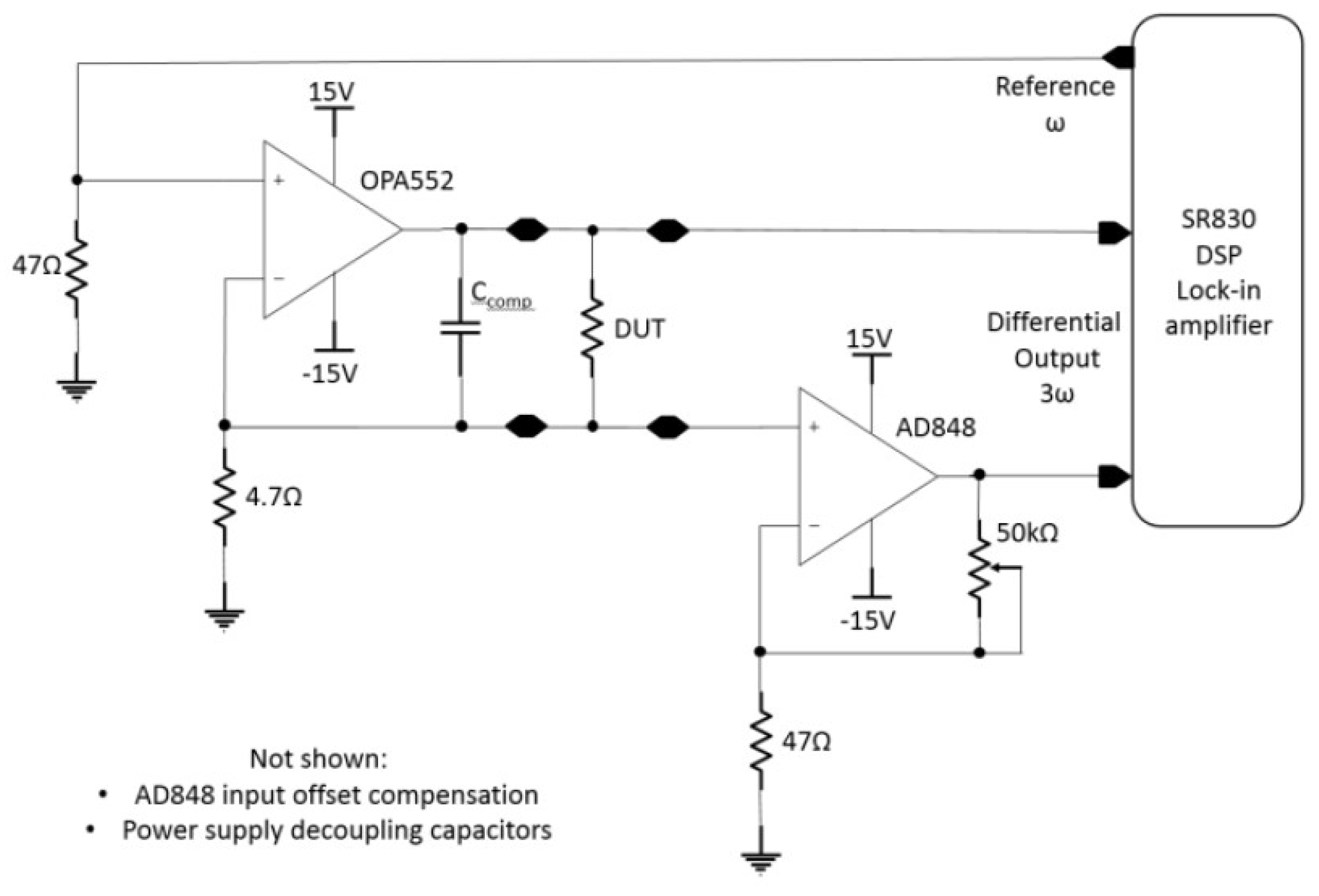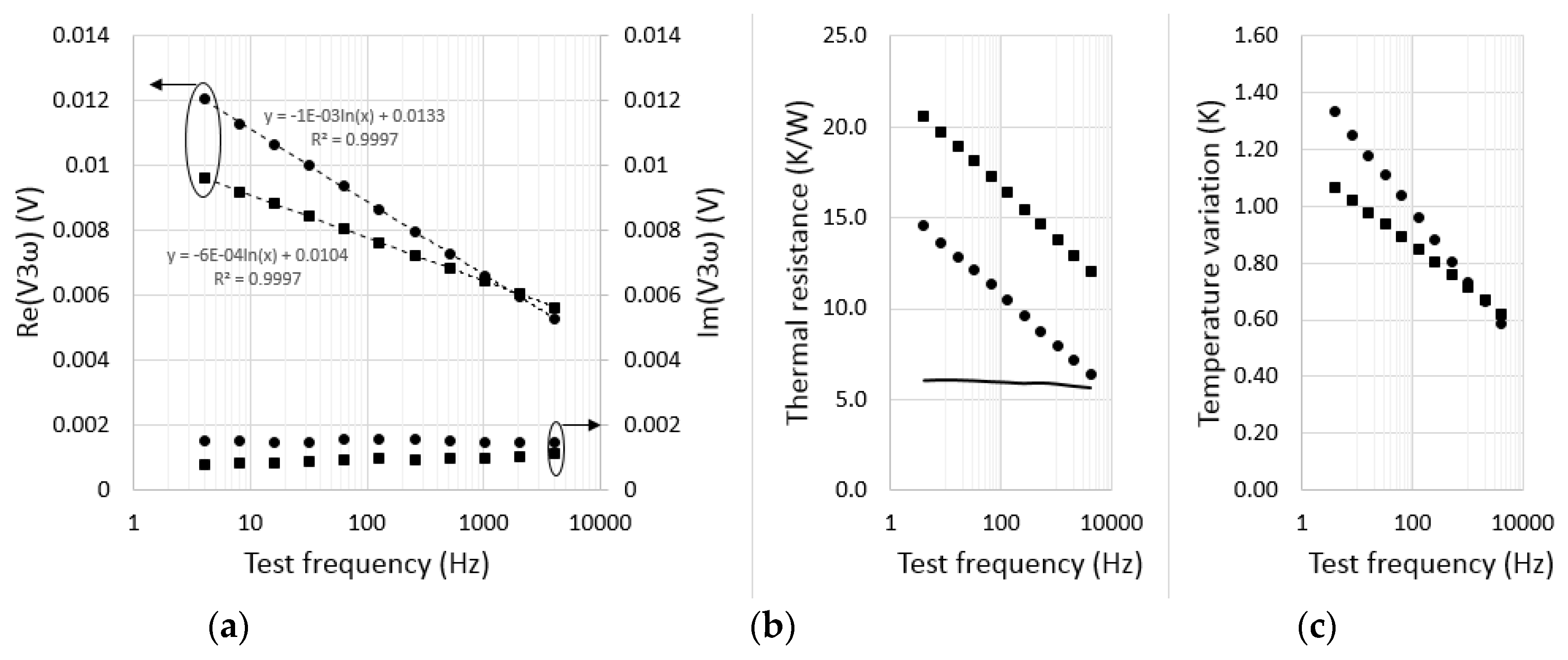On-Chip Thermal Insulation Using Porous GaN †
Abstract
:1. Introduction
2. Materials and Methods
3. Results and Discussion
4. Conclusions
Funding
Acknowledgments
Conflicts of Interest
References
- Udrea, F.; De Luca, A. CMOS technology platform for ubiquitous microsensors. In Proceedings of the 2017 International Semiconductor Conference (CAS), Sinaia, Romania, 11–14 October 2017; pp. 43–52. [Google Scholar] [CrossRef]
- Cahill, D.G. Thermal conductivity measurement from 30 to 750 K: The 3ω method. Rev. Sci. Instrum. 1990, 61, 802–808. [Google Scholar] [CrossRef]
- Alvarez-Quintana, J.; Rodriguez-Viejo, J. Extension of the 3ω method to measure the thermal conductivity of thin films without a reference sample. Sens. Actuators A Phys. 2008, 142, 232–236. [Google Scholar] [CrossRef]
- Zhu, T.; Liu, Y.; Ding, T.; Fu, W.Y.; Jarman, J.; Ren, C.X.; Oliver, R.A. Wafer-scale Fabrication of Non-Polar Mesoporous GaN Distributed Bragg Reflectors via Electrochemical Porosification. Sci. Rep. 2017, 7, 45344. [Google Scholar] [CrossRef] [PubMed]
- Smith, D.S.; Alzina, A.; Bourret, J.; Nait-Ali, B.; Pennec, F.; Tessier-Doyen, N.; Gonzenbach, U.T. Thermal conductivity of porous materials. J. Mater. Res. 2013, 28, 2260–2272. [Google Scholar] [CrossRef]
- Landauer, L. The electrical resistance of binary metallic mixtures. J. Appl. Phys. 1952, 23, 779–784. [Google Scholar] [CrossRef]



Publisher’s Note: MDPI stays neutral with regard to jurisdictional claims in published maps and institutional affiliations. |
© 2018 by the authors. Licensee MDPI, Basel, Switzerland. This article is an open access article distributed under the terms and conditions of the Creative Commons Attribution (CC BY) license (https://creativecommons.org/licenses/by/4.0/).
Share and Cite
Spiridon, B.F.; Griffin, P.H.; Jarman, J.C.; Liu, Y.; Zhu, T.; Luca, A.D.; Oliver, R.A.; Udrea, F. On-Chip Thermal Insulation Using Porous GaN. Proceedings 2018, 2, 776. https://doi.org/10.3390/proceedings2130776
Spiridon BF, Griffin PH, Jarman JC, Liu Y, Zhu T, Luca AD, Oliver RA, Udrea F. On-Chip Thermal Insulation Using Porous GaN. Proceedings. 2018; 2(13):776. https://doi.org/10.3390/proceedings2130776
Chicago/Turabian StyleSpiridon, Bogdan F., Peter H. Griffin, John C. Jarman, Yingjun Liu, Tongtong Zhu, Andrea De Luca, Rachel A. Oliver, and Florin Udrea. 2018. "On-Chip Thermal Insulation Using Porous GaN" Proceedings 2, no. 13: 776. https://doi.org/10.3390/proceedings2130776
APA StyleSpiridon, B. F., Griffin, P. H., Jarman, J. C., Liu, Y., Zhu, T., Luca, A. D., Oliver, R. A., & Udrea, F. (2018). On-Chip Thermal Insulation Using Porous GaN. Proceedings, 2(13), 776. https://doi.org/10.3390/proceedings2130776




